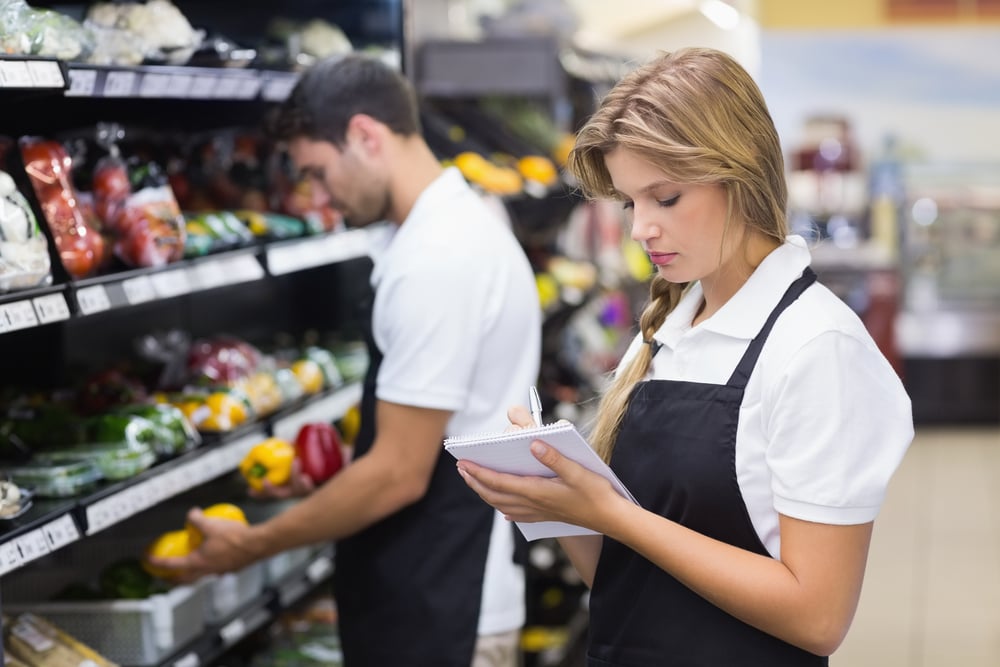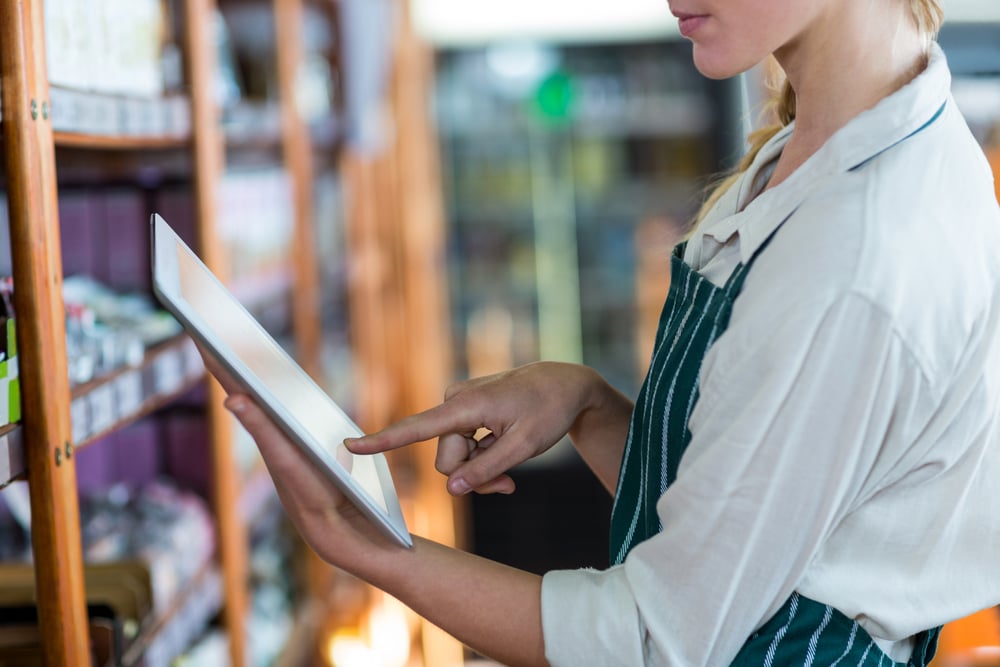What is Mobile Commerce (M-Commerce)?

In an era dominated by smartphones and interconnected devices, the landscape of commerce has undergone a remarkable transformation, giving rise to m-commerce as a pivotal force shaping the way we buy, sell, and interact with businesses. The benefits of mobile commerce include reaching a wider audience, providing omnichannel experiences, and ensuring quick and seamless checkout options.
Whether you’re a tech enthusiast, an entrepreneur, or simply curious about the future of retail, this guide is your gateway to unraveling the multifaceted realm of m-commerce, from its fundamental concepts to its cutting-edge applications.
Defining m-commerce
M-commerce, also known as mobile commerce, refers to the ability to transact with a smartphone, tablet, or other portable device. Applications for this have emerged from various areas like finance, retail, and healthcare, making m-commerce an integral part of everyday life. The number of smartphone mobile network subscriptions worldwide reached almost 6.4 billion in 2022.
The benefits that accompany mobile commerce include convenience and ease of use, creating memorable experiences for users. For companies operating online in this field, they must ensure the customer experience remains satisfactory by focusing greatly on providing aesthetically pleasing yet functional web designs for mobile users. Additionally, implementing effective strategies to increase and deliver a successful mobile commerce experience is crucial for boosting mobile commerce sales.
M-commerce vs e-commerce
In contrast to e-commerce, which is conducted using desktop computers or laptops, m-commerce utilizes mobile devices such as mobile phones, smartphones, and tablets for conducting commercial transactions online.
Due to their increased mobility and location tracking capabilities compared to regular e-commerce sites, businesses can deliver offers based on the user’s exact position.
Both buying and selling goods through either form of commerce share a common goal: providing customers with convenience in their shopping experience, whether they use m-commerce via smartphone devices or engage in traditional e-commerce sites while sitting at home behind laptop screens.
As technology advances further, companies need strategies that fit both models, considering the ever-increasing prominence of the pocket gadgets we all carry around every day.
Ultimately, integration between web stores and store applications has become necessary for the present times, allowing merchants to easily reach their potential buyers from any place within one platform.
With mobile devices becoming increasingly popular among users worldwide, organizations are continuously searching for ways to ensure consumer needs are met by even more efficient systems than were possible before.
Thanks to the progress of the digital age, we now have a wealth of opportunities at our fingertips, accessible on a daily basis, opening up a huge variety of options that were previously impossible just a decade ago.
Types of m-commerce transactions
M-commerce can be divided into three distinct types: mobile shopping, mobile banking apps, and mobile payment platforms. All of these categories harness the convenience that accompanies access to technology through our portable devices.
Mobile payment apps like PayPal and Apple Pay play a crucial role in mobile commerce transactions, enabling quick, secure purchases linked to bank accounts through mobile devices.
Mobile shopping
Mobile shopping, a form of m-commerce, offers users the convenience and flexibility to make purchases from any location using an app or mobile site on their handheld devices or even social media platforms.
Despite certain security challenges, mobile shopping continues to gain popularity as businesses find better ways for customers to shop conveniently across various electronic devices, such as smartphones and tablets, without hassle.
A real-life example of mobile shopping in action is the Starbucks mobile app. This app allows customers to order and pay for their favorite drinks and snacks directly from their smartphones.
Customers can customize their orders, make payments through the app, and then retrieve their items at a nearby Starbucks store, bypassing long lines and saving time during their busy schedules.
Mobile banking
Mobile banking, a subset of m-commerce, empowers users to manage their finances using mobile devices. Activities such as conducting transactions, checking account balances, and transferring funds become effortless with access to up-to-date information provided by banks from any location.
This offers both convenience and security for customers seeking quick solutions without the need to visit branches in person. However, potential risks related to customer trust issues and rapid technological changes need to be addressed promptly.
An example of mobile banking is the "N26" app, provided by N26, a German-based neobank. N26 offers a mobile banking experience that allows users to open an account, receive a debit card, manage their finances, set savings goals, and make transactions directly from their smartphones.
With a user-friendly interface and a strong focus on delivering a seamless mobile banking experience, N26 illustrates how banks are embracing digital technology to provide convenient and secure banking services to their customers.
Mobile payments
M-commerce transactions can be conducted through the use of mobile payments and digital wallets, which facilitate quick and convenient purchases by securely storing debit or credit card details and customers’ shipping addresses using services like Apple Pay, Google Pay, or Samsung Pay.
For instance, Apple Pay enables users to add their debit or credit card information to their Apple devices, such as iPhones and Apple Watches. Apple Pay can be utilized for online purchases within apps and websites, streamlining the checkout process and providing a secure and convenient payment method across a wide range of merchants and platforms.
Contactless technology simplifies transactions by allowing users to tap their enabled device on a payment terminal. A prime example of this is closed-loop payment systems like Starbucks’ app, which makes payments within their own network exceptionally convenient.
Particularly for smaller merchants, Mobile Point of Sale Systems prove ideal as they only require a single mobile phone or tablet and can integrate various e-commerce platforms while offering seamless control over both online sales information and physical store inventory.
Advantages of m-commerce
M-commerce offers numerous advantages that make it an appealing choice for both customers and businesses. One of its significant benefits is the improved user experience, as individuals can shop whenever and wherever they choose using their mobile devices, enabling them to conveniently compare prices from multiple stores. It is crucial to provide an optimized and personalized experience for mobile users to ensure they have a seamless and enjoyable shopping experience.
Additionally, M-commerce enables enterprises to extend their reach beyond traditional boundaries and attract customers from all over the world, thanks to the ease of access on mobile devices.
This capability provides a consistent buying journey across various channels, including online shops, brick-and-mortar locations, and mobile devices, ultimately enhancing customer satisfaction levels.
Challenges in m-commerce
The advent of mobile commerce has brought numerous advantages, but it is also accompanied by certain challenges that require attention.
Optimizing the user experience to provide customers with a seamless and intuitive mobile journey is of utmost importance. This entails ensuring that mobile websites and apps are visually appealing and responsive.
Simultaneously, robust security measures must be implemented to safeguard sensitive customer data from potential threats. For businesses, managing multiple payment methods available across different regions they aim to target adds a layer of complexity. The selection of an optimal blend of payment options should be based on the preferences and locations of their customers.
Building trust is essential when customers shop via their mobile devices, and this can be achieved through transparent and secure transactions. These efforts collectively aim to ensure that m-commerce offers convenient and trustworthy experiences for all consumers.
Case Studies: Successful m-commerce examples
Mobile commerce has proven to be successful for large companies such as:
-
Amazon, as one of the world's largest e-commerce platforms, has harnessed mobile commerce to expand its global reach even further. The Amazon mobile platform boasts features such as one-click purchasing, personalized recommendations, and convenient payment options, greatly enhancing the ease and efficiency of on-the-go shopping.
-
Uber, with its groundbreaking mobile app, has spearheaded a revolution in the transportation industry by seamlessly connecting riders with drivers via smartphones. Users can hail rides, track driver locations, estimate fares, and make cashless payments—all within the app. This unparalleled level of convenience has disrupted traditional taxi services significantly, showcasing how mobile commerce can revolutionize service-based businesses.
-
Etsy, a beloved online marketplace specializing in handmade and vintage items, offers a mobile app that empowers artisans and sellers to manage their shops, while allowing customers to explore and purchase unique products. The app facilitates secure mobile payments and fosters communication between buyers and sellers, simplifying users' engagement in m-commerce transactions.
-
Zara, a renowned fashion retailer, has integrated mobile commerce into its strategic approach through its dedicated mobile app. Shoppers can peruse the latest fashion collections, receive real-time notifications regarding sales and promotions, and make secure mobile payments, providing a seamless and convenient shopping experience for fashion-conscious consumers.
Emerging trends in m-commerce
As m-commerce continues its evolution, several emerging trends are poised to shape its future. One critical trend is the rise of social commerce, with platforms like Facebook Shop, Instagram Shopping, and Pinterest Business offering users the ability to search for and purchase items directly through social media channels. Mobile ticketing is also gaining traction, providing users with the convenience to purchase and store tickets for events, travel, and entertainment on their mobile devices.
This trend has significantly influenced the buying behavior of Gen Zers and millennials, and companies must harness these features to remain competitive in the market.
Another noteworthy development is the integration of augmented reality (AR) into mobile apps.This technology allows customers to virtually try out products or visualize how furniture might look in their own homes using just their smartphones. Additionally, AR can provide tailored product suggestions based on individual user preferences, enhancing the overall shopping experience.
As businesses increasingly prioritize their web presence, mobile SEO has gained significant importance. Alongside this, chatbots and loyalty programs within mobile applications have also seen rising popularity. Chatbots prove to be effective tools for engaging with consumers, while loyalty programs play a crucial role in retaining customers, contributing to the success of m-commerce strategies.
Summary
M-commerce has gained significant popularity, offering unparalleled convenience, accessibility to a wide range of products and services, and various other benefits. When venturing into the realm of mobile commerce, companies must prioritize the optimization of user experience, robust security protocols, and diverse payment methods.
Staying competitive and keeping pace with emerging trends like augmented reality and social shopping techniques is crucial for success in this ever-evolving space. To thrive, businesses not only need to stay informed but also embrace the opportunities presented by these trends and adapt accordingly.






